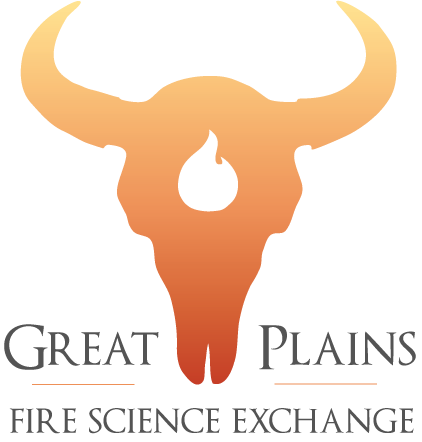K-12 Education
This kit was originally designed in 2012 by Jon Schwedler and Wendy Fulks for use with Nature Conservancy Fire Management staff and Outreach Specialists. The kit was adapted by Sherry Leis with the Great Plains Fire Science Exchange. We thank two reviewers for commenting on the revised kit. You can find many of the documents we cited in the report on this web site by using the search bar
2013-02
Read MoreThe Fire Effects Monitoring and Inventory System (Firemon) is a U.S. Forest Service independent plot level sampling system designed to characterize changes in ecosystem attributes over time.
www.frames.gov/index.php/partner-sites/firemon/firemon-home/
Read MoreThe fire ecology program for the Central Great Plains region, embedded within the Heartland Inventory and Monitoring Network (HTLN), is multifaceted. It serves as an integrating factor among the vital signs projects already in place within HTLN as well as integrating HTLN into the Midwest Region Fire programs.
Sampling methods used are a hybrid of those described in the HTLN vegetation monitoring protocol and the NPS Fire Monitoring Handbook. The fire ecology program has adapted the protocols described in the Fire Monitoring Handbook to synchronize with the existing sample site array established by HTLN. In this way, both short-term fire ecology data and long-term vegetation monitoring data are collected in a complementary fashion
Read MoreSTILLWATER, Okla. – The Oklahoma Prescribed Burning Handbook has been a wildly popular publication. So much so that John Weir, research associate in Oklahoma State University’s Department of Natural Resource Ecology and Management can hardly keep them stocked on his shelves. To help keep the supply up with the demand, Weir worked with DASNR’s Technology-Services and Support group to create the “Prescribed Fire Handbook,” a mobile website landowners and land managers can easily take with them into the field.
“Anywhere someone has phone service or an Internet connection is a great place to take advantage of this technology,” Weir said. “Virtually all of the information found in our hard copy handbook is now available online in a mobile friendly version.”
The page, factsheets.okstate.edu/e1010, has different tabs at the bottom for various interest areas. There are links to fact sheets and highlights, as well as a question and answer section and tabs for information, such as the effects of fire, preferred weather, fire laws and training opportunities.
“This mobile handbook can answer many of the questions anyone may have before and when conducting prescribed burns,” Weir said. “While the Oklahoma Prescribed Burning Handbook is full of great information, this new technology has all the same information, but it’s much more conveniently accessed through all media devices.”
The information found on the site is valuable to more than just Oklahoma residents, too. “People from all over the region, in surrounding states, can use this information for their burning needs, as well,” Weir said. “While this is not Oklahoma-specific material, we know that residents in our state have really put this information to good use in years past through the hard copy of this handbook.”
By visiting the website, users can create an icon on their smartphone, tablet or laptop. The icon can be placed on a home screen and used as a link, taking users straight to the website and information.
“We are really excited about being able to provide this information to everyone,” Weir said. “It will be very handy to just pull your phone out and search for what you need, rather than shuffling through pages of the old handbook.”
sunup.okstate.edu/category/seg/2014-second-half/072614-prescribed
Read MoreLearn how to set up photo points so that you maximize the information they provide.
www.fs.fed.us/pnw/pubs/gtr526/
Read MoreThis new publication discusses a variety of ways to construct food plots. Fire is discussed as a way of attracting wildlife along with more traditional agricultural approaches such as crop plantings. If you maintain fire breaks on your land, the breaks might be able to serve as places to attract wildlife without disturbing new ground.
Read MoreThis document has been transcribed from a scan of the February 1992 Fire Behavior Field Reference Guide. The scan was converted to editable text using OCR; the text was then edited and formatted. Outdated content referring to BEHAVE was not transcribed. Figures have been included in this document by simple copy-and-paste, not by scanning to an image file. Many figures should be re-created with graphing or illustration software. Tables were either copy-and-pasted or re-created in electronic format.
Read MoreA comprehensive manual for evaluating fire effects developed by the National Park Service
Read MoreThe National Wildfire Coordinating Group (NWCG) has developed this information for the guidance of its member agencies and is not responsible for interpretation or use of this information for everyone except the member agencies. The use of trade, firmor corporation names in this publication are for the information and convenience of the reader and do not constitute an endorsement by NWCG of any product or services to the exclusion of others that may be suitable.
Read MorePrescribed burning for range improvement has become a common practice during the past few years. This has been especially evident in Texas. Prescribed fire can accomplish many range improvement objectives with a single treatment. For example, one burn can control noxious brush, increase herbage yield, increase utilization, increase forage availability, improve wildlife habitat and control various disease.
Read More
